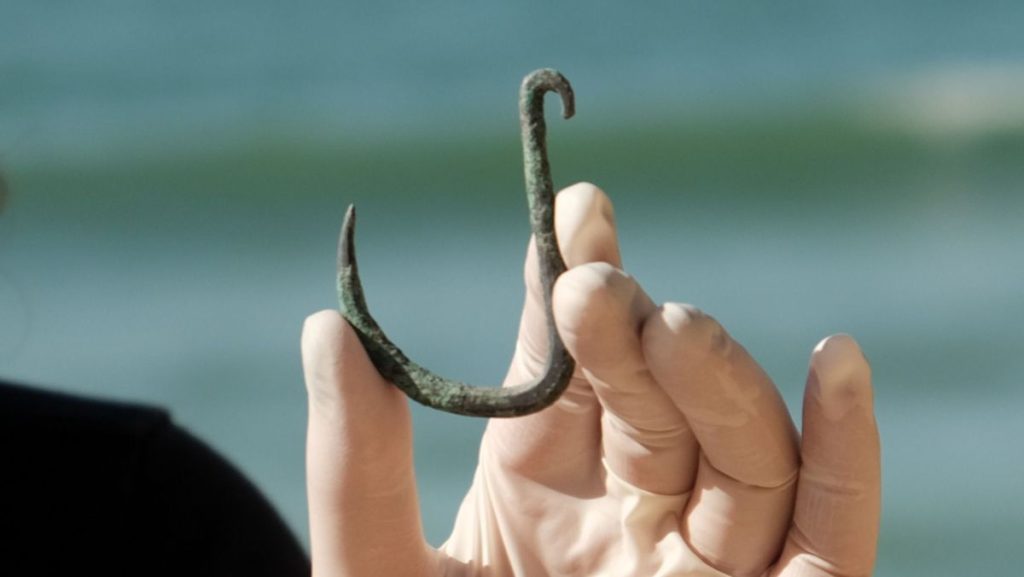The copper fishing hook recently unearthed at a site near Ashkelon in Israel. (Image credit: Emil Aladjem, Israel Antiquity Authority)
Shark was likely on the menu around 6,000 years ago in what is now Israel, according to researchers who uncovered a large copper fishing hook in a previously unknown ancient village.
Archaeologists unearthed the “shark hook” during a 2018 survey along the Mediterranean coast on the outskirts of Ashkelon, a city that was built on top of an ancient seaport of the same name and dates back as far as ancient Egypt. Byzantine and Roman structures had previously been discovered at the site, which sits around 2.5 miles (4 kilometers) from the sea. But the new excavations revealed parts of a village that date back around 6,000 years to the Chalcolithic period, also known as the “Copper Age,” which lasted between 4500 B.C. and 3500 B.C. in the region (opens in new tab).
The hook is around 2.5 inches (6.5 centimeters) long and 1.6 inches (4 cm) wide, which is big enough to reel in sharks between 6.5 and 10 feet (2 and 3 meters) long, such as dusky sharks (Carcharhinus obscurus) and sandbar sharks (Carcharhinus plumbeus), or large fish such as tuna, all of which are local to the Mediterranean. However, given what marine biologists know about the deep-sea ecosystems in the region, sharks were a more likely target, according to The Times of Israel (opens in new tab).
Related: 54,000-year-old stone points are oldest evidence of bows and arrows in Europe
Dusky sharks (Carcharhinus obscurus) could have been reeled in using the newly discovered fishing hook. (Image credit: Shutterstock)
The discovery is a “unique find” because most other fishing hooks uncovered from this time period are smaller and made from bone, Yael Abadi-Reiss (opens in new tab), an archaeologist with the Israel Antiquities Authority who co-led the excavation, said in a statement (opens in new tab). It’s possible that this is one of the first metal variants that people created in the region, considering copper was a relatively new material at the time, she added.
The village, which is not yet fully excavated, was large for its time period. As such, the residents likely had enough resources to have individuals who were dedicated to metalwork and fishing, Abadi-Reiss said. However, other finds at the site, such as domesticated animal remains, suggest that the village’s main source of income and food would have been traditional agriculture.
“The rare fishhook tells the story of the village fishermen who sailed out to sea in their boats and cast the newly invented copper fishhook into the water, hoping to add coastal sharks to the menu,” Abadi-Reiss said.
The oldest fishing hooks ever discovered were made of bone and date back to around 42,000 years ago. These prehistoric hooks, which were discovered in Southeast Asia on the island nation of East Timor in 2005, were also used to fish for tuna-size fish in the deep sea.

